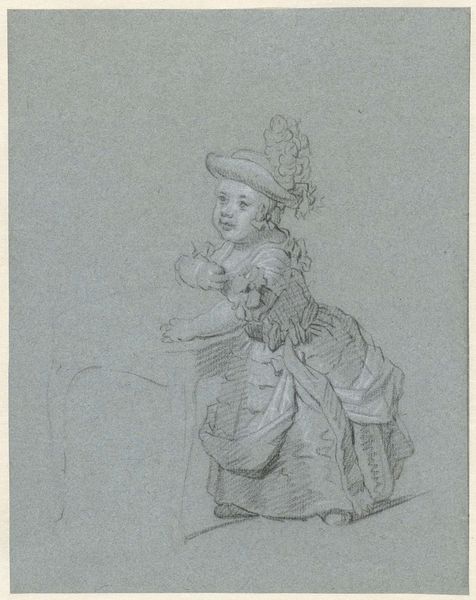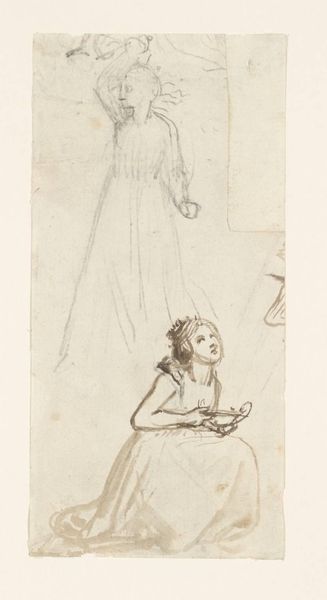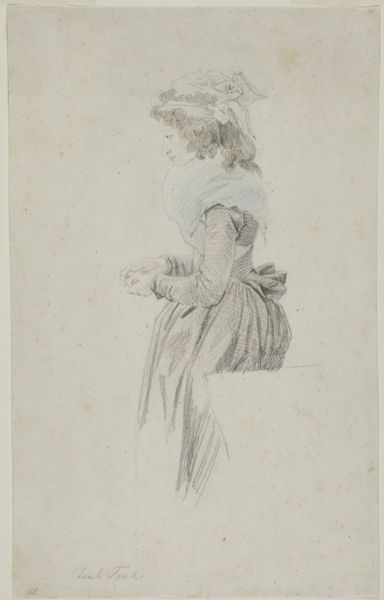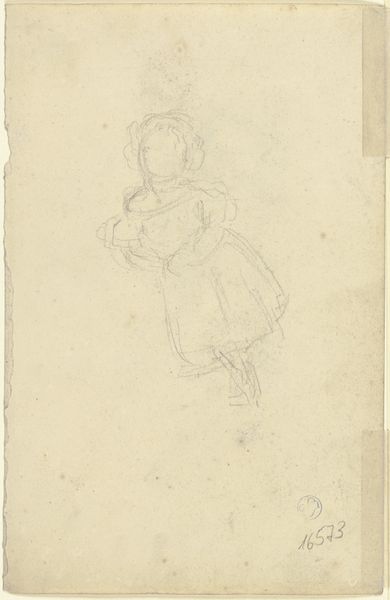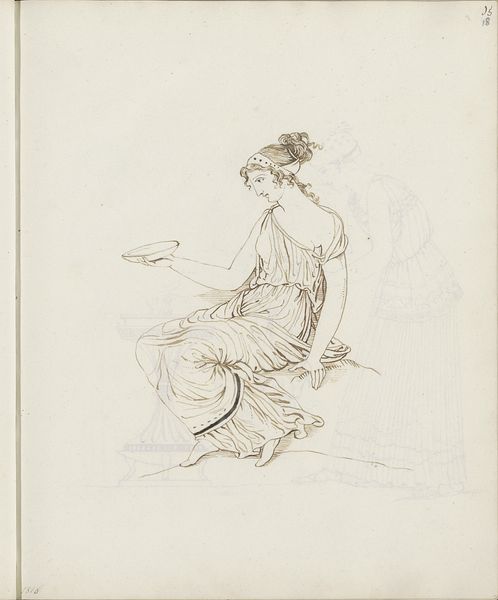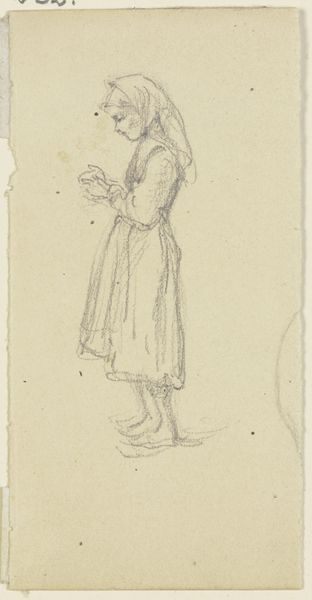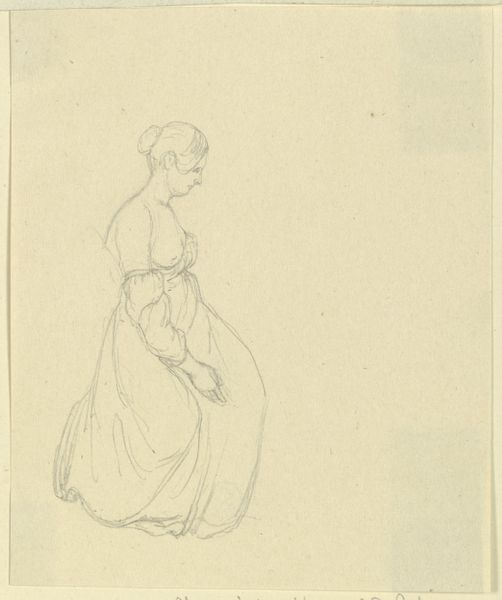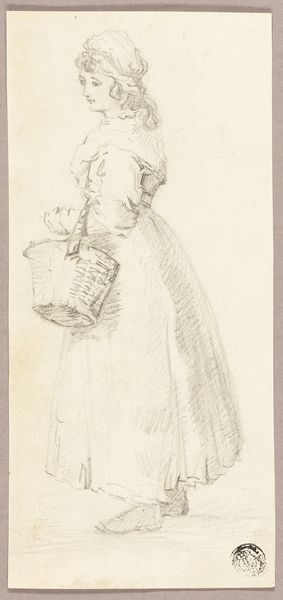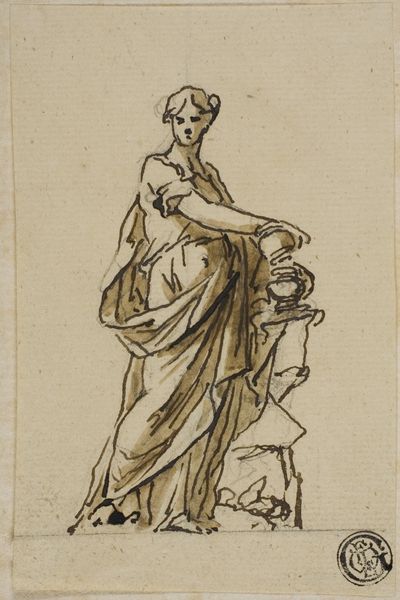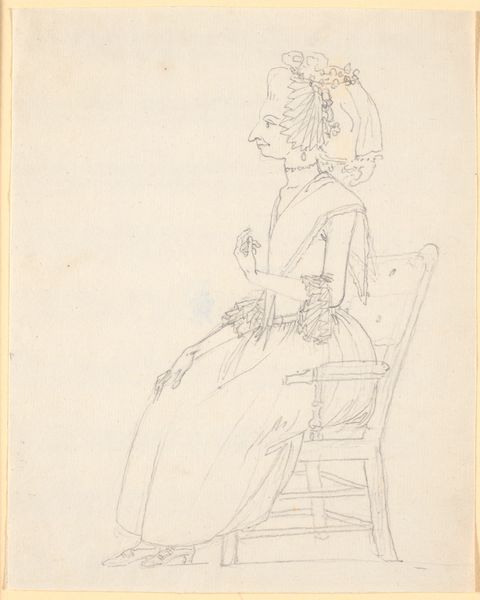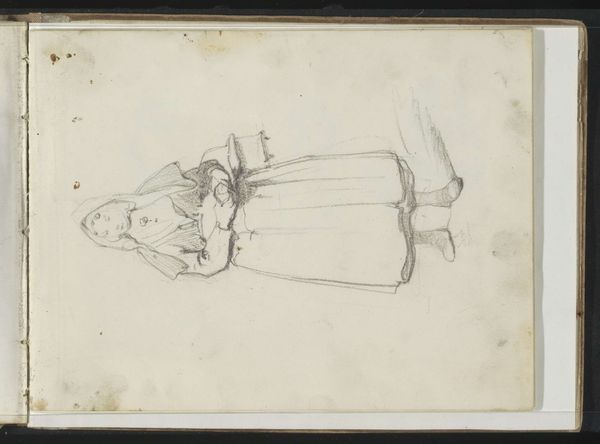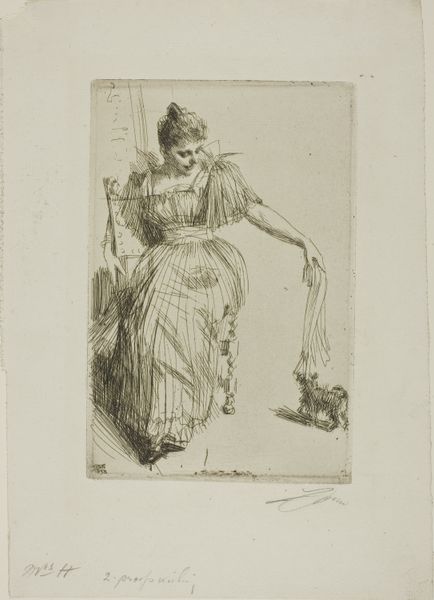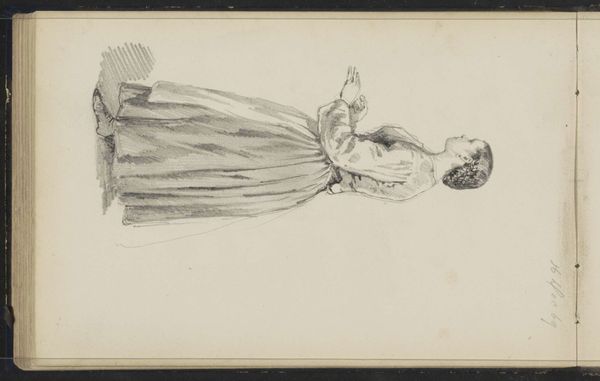
Dimensions: 290 mm (height) x 200 mm (width) (bladmaal)
Curator: Allow me to introduce this intriguing pen drawing, "Stående dame med hund," which translates to "Standing Lady with Dog." Created by C.A. Lorentzen between 1746 and 1828, it offers a glimpse into a moment of quiet domesticity rendered on paper. Editor: My first impression is how fragile this moment feels. The lines are so delicate, like a memory fading. I'm immediately drawn to the woman’s posture; she seems burdened somehow, leaning on what looks like a balustrade. Curator: Indeed, the fragility speaks to the nature of the medium, but also potentially to the sitter’s social position within the romantic era, where sentimental introspection gained cultural traction. I wonder, how does the inclusion of the dog affect your understanding? Editor: The dog humanizes her, perhaps democratizes her. It is no grand dame portrait meant for the state, rather this feels intimate. However, I also find myself wondering about power dynamics within the domestic sphere, the woman as subject, object, and proprietor of the household. Is the artist using her pose as a comment about female submission? Curator: It’s interesting that you use the word “submission." One could interpret her pose as suggesting quiet self-assuredness. We see a woman taking time with her animal; the sketch does allow us space for projecting an identity that the details themselves have obfuscated, which is perhaps why it also invites projection. In Denmark at this time, genre-painting scenes began to gain popularity as forms of moral or satirical lessons, or romantic ideals of simpler times and the drawing may not even portray someone particular. Editor: I see your point about potential symbolism or societal commentary, but I am not entirely convinced. There is very little landscape, if anything at all. The plainness makes me focus on her clothes which speak to wealth. I struggle with the possibility this drawing reflects reality because I am reminded this is a Romantic’s depiction and therefore an elite depiction that must necessarily overlook social factors such as class divisions, among others. Curator: We come to different yet interesting positions! Her dress tells us one thing about status while her interactions may tell us about societal changes happening around women and even the rising bourgeoisie. Ultimately the viewer has the right and privilege of deciding what is more pertinent to notice here. Editor: Well put. Art is about conversations, no? In this case, a woman and a dog in conversation... captured by Lorentzen! Curator: Nicely summarized. I'll hold on to your observations for my next talk on social critique, and maybe you'll bring some new perspectives next time on Romantic portraiture.
Comments
No comments
Be the first to comment and join the conversation on the ultimate creative platform.
